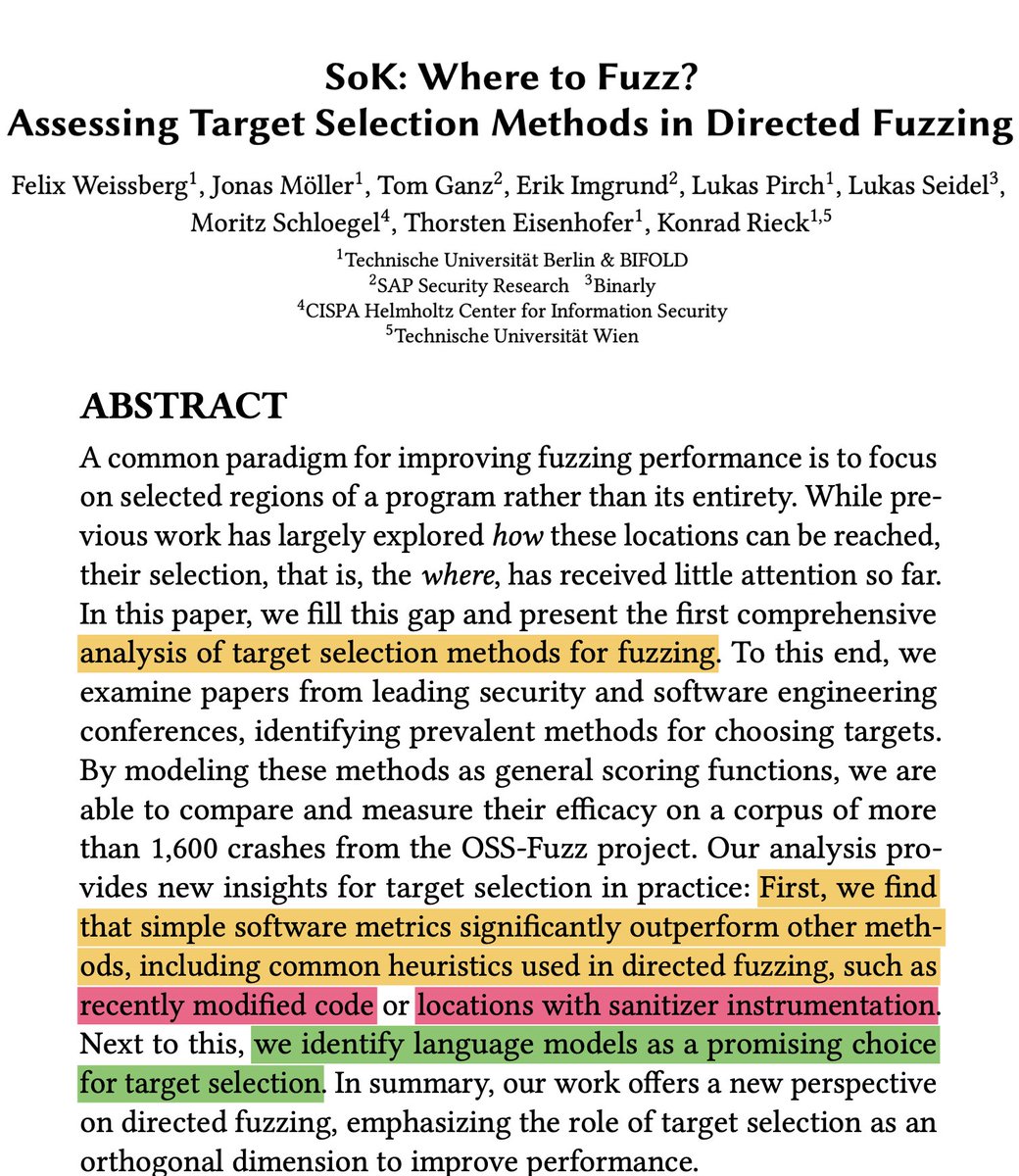Before we announce the exciting keynotes for #FUZZING'24, we found some time to upload the recordings for the last two years by Abhishek Arya (@infernosec), @AndreasZeller, Cristian Cadar (@c_cadar), and Kostya Serebryany (@kayseesee).
//@lszekeres, @baishakhir, @yannicnoller.
//@lszekeres, @baishakhir, @yannicnoller.
FUZZING'22 Keynote by Abhishek Arya (Google) on "The Evolution of Fuzzing in Finding the Unknowns"
FUZZING'22 Keynote by Andreas Zeller (CISPA & Saarland U) on "Fuzzing: A Tale of Two Cultures"
FUZZING'23 Keynote by Cristian Cadar (Imperial College London) on "Three Colours of Fuzzing: Reflections and Open Challenges"
FUZZING'23 Keynote by Kostya "KCC" Serebryany (Google) on "Rich Coverage Signal and the Consequences for Scaling"
• • •
Missing some Tweet in this thread? You can try to
force a refresh











